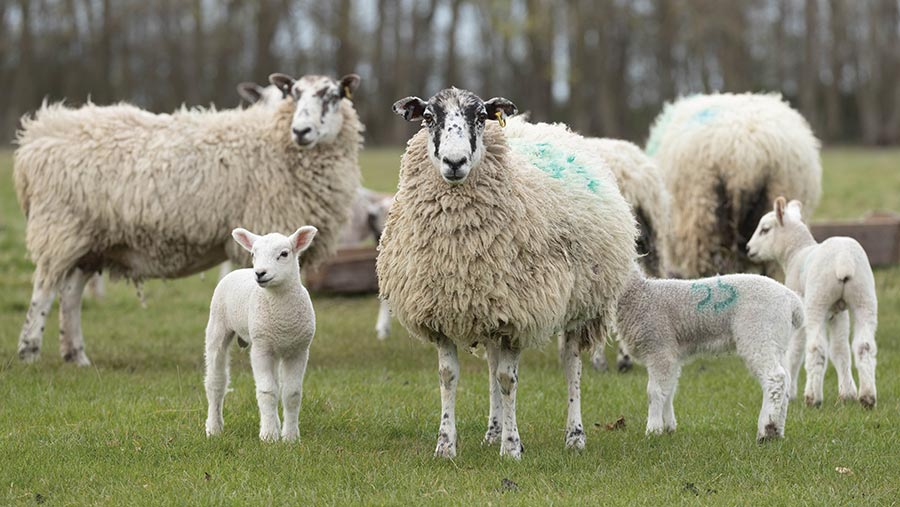Outlook 2024: Modest profitability for falling national sheep flock
 © Tim Scrivener
© Tim Scrivener The national flock had been rebuilding since 2018 when the “Beast from the East” resulted in significant ewe and lamb losses.
However, annual growth rates have slowed more recently and 2023 has seen a significant fall, says Andersons director David Siddle.
Data from the June 2023 census were released as this issue of Farmers Weekly was due to go to press, showing a 2.4% drop in the UK sheep breeding flock compared with year-earlier levels, at to 15.4 million head.
See also: [pls use see also for one of the other Outlook articles when available]
Sheep market summary
- The national flock is falling
- Sheepmeat consumption is expected to weaken in 2024 due to tightening consumer budgets
- Market dynamics remain favourable as European production falls and Australia and New Zealand focus on China
- Some production costs continue to rise – strong sheepmeat prices are needed to maintain positive margins
Rising costs, strong cull sheep values, reducing support payments and uncertainty over future policy, along with an ageing population of sheep keepers, are likely contributing factors to the decline seen in the flock.
Despite plenty of discussion about regenerative agricultural practices and the reintroduction of mixed farming, we are not seeing significant areas returning to rotational pasture and being stocked with breeding ewes.
The underlying profitability of the enterprise remains modest at best, in particular for those without family labour.
Lower consumption expected
Consumption is expected to weaken in the year ahead, linked to recessionary pressure and tighter consumer budgets, both in the UK and in our major export markets in Europe.
However, market dynamics remain favourable as production in Europe continues to fall, down 6.5% in the first half of 2023, and Australian and New Zealand exporters focus on their geographically closer Chinese markets.
Positive short-term prospects
Headwinds include an expanding Australian flock and, over time, increased market access from recent free-trade deals.
The long-term decline in consumption of sheepmeat is also a concern. In the short term though, prospects for the UK sheep sector remain positive and prices will hopefully remain at the higher levels seen over the past three seasons.
Sheep are generally an extensive enterprise and not as reliant on purchased feed and fertiliser as cattle or arable businesses.
Some lowering of feed and fertiliser prices will be welcomed going into 2024, but rising labour, machinery, fuel and financing costs are likely to prevent costs of production returning to former levels.
Continued strong prices are needed to maintain a positive margin.
Cost of production
Most cost-of-production data suggest well-managed lowland and upland flocks need somewhere in the region of 230-250p/kg liveweight or 485-550p/kg deadweight to make a profit, to include a return on family labour.
Recent market prices have been delivering this.
This will need to continue as the value of support going into sheep businesses declines. In England the 2024 basic payment will be half (or less) of its 2020 level, before considering the effects of inflation.
We expect to see an accelerated decline in sheep kept in the high hills, where output is typically low, and forestry or other forms of environmental land management prove more attractive.
The industry is likely to become less dependent on the traditional stratified structure, introducing more closed flocks and making more use of composite breeds, for example.
SFI could reduce sheep
In the lowlands, farm businesses that have traditionally managed smaller and/or poorer areas of grazing with breeding ewes may take advantage of the agri-environmental opportunities available to them from schemes such as the Sustainable Farming Incentive in England.
These schemes may provide alternative management options that reduce or replace small sheep flocks kept on these areas.
Expanding specialist enterprises achieving better levels of performance may well take up the slack, most likely on the productive areas of upland grazing.
The challenging economics of keeping suckler cows may provide further impetus, with some upland farms focusing their efforts on expanding and improving the efficiency of their sheep flocks at the expense of keeping cattle.
